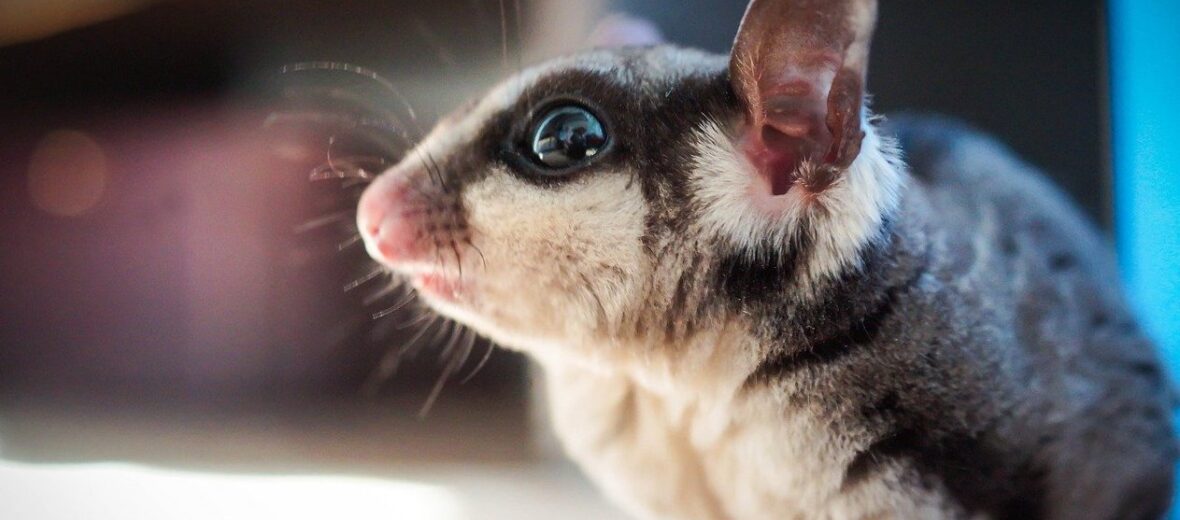
The sugar glider is not only cute, but they’re social animals as well. If you’re willing to work at it, they are also loyal pets too. These little critters come in a variety of colors and are very acrobatic. (See the video below). I have had sugar gliders in my care over the years and feeding them, properly, is a task, they need a great deal of love and attention, and they are certainly not for the beginner pet owner!! But talk about cute, cuddly, and soft! Read more on these fascinating little cuties.
First the Stats…
Scientific name: Petaurus breviceps
Weight: Up to 4.3 ounces
Length: Up to 13 inches, including their tail
Life span: Up to 15 years
Now on to the Facts!
1.) Sugar gliders are members of the Petauridae family. Petauridae are members of the large order Diprotodontia, which includes other marsupials such as kangaroos, koalas, and wombats. The sugar glider has 5 digits on each foot. Its hind feet each have an opposable toe, allowing the sugar glider to grip onto branches.
2.) These gliders make a variety of sounds from clicking, to what some have described as the sound of a rusty chainsaw! They even bark like a small dog, especially around a full moon!
3.) As marsupials, they are born at a very early stage of development weighing less than 1 gram. They then make their way to mom’s pouch where they continue to develop and grow.
4.) These critters come from southern, eastern, and northern Australia, New Guinea, Indonesia and they were introduced in to Tasmania in the 1800’s.
5.) Sugar gliders are arboreal which means they spend most of their lives in the canopy of the forest.
But wait! There is more on the sugar glider!
6.) Sugies have a gliding membrane (called a patagium) that stretches from their wrists to their ankles and allows them to glide up to 300 feet from tree to tree.
7.) 2 of the toes on both back feet are fused together (known as syndactyly) to form a grooming comb.
8.) They live in large colonies of up to 12 individuals. Colonies usually consist of 1, occasionally 2 dominant males; and females make up the rest.
Did you know…?
Sugar gliders use smell in the same way that we use language, writing, and signs. They don’t just use urine to mark their territories, however. They also use saliva and scent produced from their foreheads and chests to get their messages across.
9.) The eyes of a sugar glider are very large (nearly as large as their brain – similar to the tarsier) as they are nocturnal (active at night) and sleep during the day.
10.) Sugar gliders have a number of scent glands; the most obvious of which is on an unaltered male’s head and looks like a bald patch. He uses it to scent other members of his colony.
But wait! There is still more on the sugar glider!
11.) The sugar glider’s anklebone can rotate 180° to allow them to descend vertical tree trunks head first.
12.) Females are capable of suckling different aged joeys at the same time. Marsupial milk changes composition as the joey grows, each nipple can produce a different stage of milk.
13.) Wild gliders’ diet largely consists of Acacia Gum, which is indigestible to many species. Gliders however, have an elongated caecum (part of the intestine) to allow gum to be digested.
14.) As pets, they are difficult to care for and need a tremendous amount of work to feed the proper diet. If you aren’t willing to do the research and put in the effort, then it’s best not to ever own them. Something to realize too is that you need 2 or more housed together, as they are a communal species. Most of the time, these are best to avoid as pets.
Now a Short Sugar Glider Video!
Also, check out the Critter Science YouTube channel. Videos added frequently!
Want to suggest a critter for me to write about? Let me know here.



